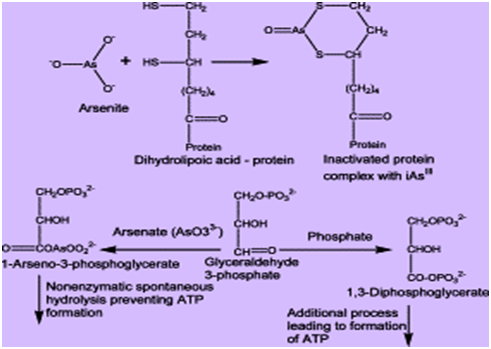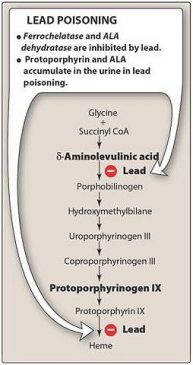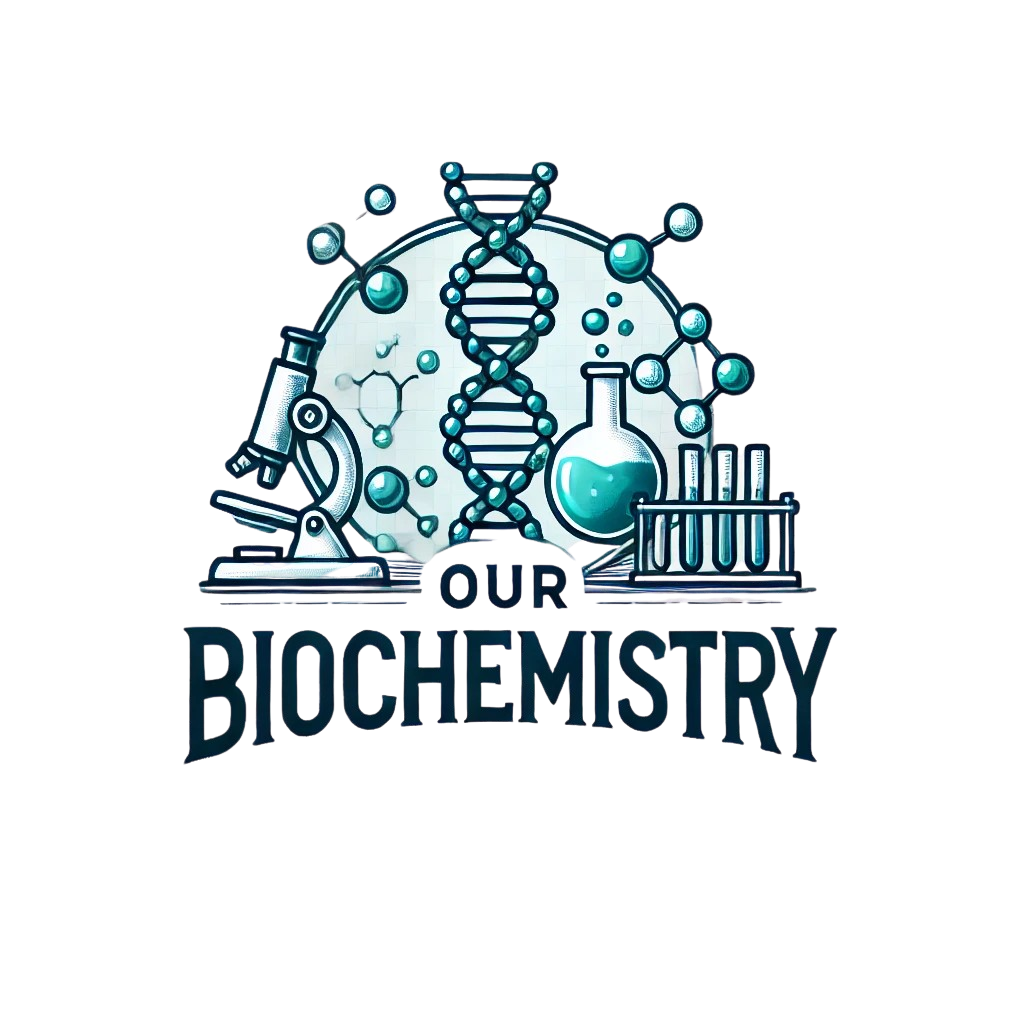46) – A 30-year-old man has been fasting for religious reasons for several days. His brain has reduced its need for glucose by using which substances as an alternate energy source?
a) Fatty acids
b) Beta-hydroxybutyrate
c) Glycerol
d) Beta carotene
e) Amino acids
47) – A 7-year-old girl is brought to the emergency department by her parents with complaints of severe polyuria and polydipsia. Laboratory examination reveals ketones in her urine. Which of the following is the most likely source of ketones?
a) Fatty acid breakdown
b) Protein breakdown
c) Glycogenolysis
d) Gluconeogenesis
e) Glucose oxidation
48) – A breastfed infant began to vomit frequently and lose weight. Several days later, she developed jaundice, hepatomegaly, and bilateral cataracts. What is the possible cause for these symptoms?
a) Galactosemia
b) Von-Gierke’s disease
c) Juvenile diabetes Mellitus
d) Hereditary fructose intolerance
e) Liver failure
49) – The major metabolic product produced under normal circumstances by erythrocytes and muscle cells during intense exercise is recycled through the liver in the Cori cycle. The metabolite is-
a) Oxaloacetate
b) Alanine
c) Glycerol
d) Lactate
e) Acetyl CoA
50) – A 3-month-old infant presents with hepatosplenomegaly and failure to thrive. A liver biopsy revealed glycogen with an abnormal, amylopectin-like structure with long outer chains and missing branches. Which of the following enzymes would most likely be deficient?
a) Alpha-Amylase
b) Branching enzyme
c) Debranching enzyme
d) Glycogen phosphorylase
e) Glycogen synthase
51) – Prior to a race, many marathon runners will try to increase their glycogen concentrations by loading up with foods with a high starch content, such as pasta. Alpha amylase secreted by the pancreas will digest the starch into which of the following major products?
a) Amylose, amylopectin, and maltose
b) Glucose, galactose, and fructose
c) Glucose, sucrose, and maltotriose
d) Limitdextrins, maltose, and maltotriose
e) Glucose, fructose and maltose
52) – Which of the following substrates cannot contribute to net Gluconeogenesis in mammalian liver?
a) Alanine
b) Glutamate
c) Palmitate
d) Pyruvate
e) Propionate
53) – Which of the following complications is less likely to occur in type II diabetics, as opposed to type I diabetics?
a) Retinopathy
b) Weight gain
c) Cardiovascular disease
d) Hypoglycemic coma
e) Hyperglycemic nonketotic
54) – Familial Fructokinase deficiency causes no symptoms because
a)Hexokinase can phosphorylate fructose
b) Liver Aldolase can metabolize it
c) Excess fructose does not escape into urine
d) Excess fructose is excreted through feces
e) Excess fructose is converted to glycogen that can be stored in the liver.
55) – Which of the following generates free glucose during the enzymatic breakdown of glycogen in skeletal muscles?
a) Phosphorylase
b) α-1-6-amyloglucosidase
c) Debranching enzyme
d) Glucose-6-phosphatase
e) Branching enzyme
56)- A 30-year-old female presents with headache and blurry vision. Her blood pressure is 200/90 mm Hg. Imaging reveals that she has a tumor that is overproducing the hormone most responsible for regulating salt and water balance for blood pressure control. That hormone is-
a) Growth hormone
b) Glucocorticoid
c) Aldosterone
d) Epinephrine
e) Glucagon.
57) – A 60-year-old female presents with severe back pain for the past one week. Imaging reveals a compression fracture of one of the vertebrae and diffuse osteoporosis, which is a common condition resulting from calcium depletion in bones. As a treatment, she should be prescribed
a) Oxytocin
b) Parathyroid hormone
c) Estradiol
c) Calcitonin
d) Prolactin
58) – A 16-year-old female presents with a fever, productive cough, and rust-colored sputum. She is diagnosed with bacterial pneumonia. She is a known case of type 1 Diabetes mellitus. She injects herself subcutaneously every day with exogenous insulin. As insulin is absorbed into her blood, it binds to insulin receptors that activate-
a) Tyrosine kinase
b) Adenylate cyclase
c) cAMP
d) Protein kinase C
e) Phospholipase C
59) – An intern is scrubbing into a complicated surgery anticipated to last 15 hours. In preparation, the intern has not eaten for the past 15 hours. After 30 hours of fasting, which of the following is most important for maintaining normal blood glucose?
a) Glycogenolysis
b) Gluconeogenesis
c)Triacylglycerolsynthesis
d) Increased insulin release
e) Decreased muscle protein breakdown.
60) – During an extended period of exercise, the enzymes involved in the glycolytic pathway in muscle tissue are actively breaking down glucose to provide muscle energy. To maintain blood glucose levels, the liver synthesizes glucose via the gluconeogenic pathway. Which of the following enzymes involved in these pathways would most likely exhibit Michaelis–Menten kinetics, that is, have a hyperbolic curve when plotting substrate concentration versus reaction velocity?
a) Fructose-1,6-bisphosphatase
b)Hexokinase
c) Lactate dehydrogenase
d)Phosphofructokinase-1
e) Pyruvate kinase
61) – A 24- year-old boy presents with diarrhea, dysphagia, jaundice, and white transverse lines on the fingernails. The patient is diagnosed with arsenic poisoning, which inhibits which of the following enzymes?
a) Citrate synthase
b) Isocitrate dehydrogenase
c) Pyruvate dehydrogenase
d) Alpha-ketoglutarate dehydrogenase
e) Succinate dehydrogenase.
62) – A 3-year-old boy is brought to the emergency room with abdominal pain, mental status changes, and fatigue. After taking history, the physician finds the child belongs to a very poor family, lives in an old house, and has the habit of licking the paint chips that have crumbled in the window sills. The physician suspects lead poisoning. Lead typically interferes with which of the following enzymes?
a) Cytochrome oxidase
b)Protoporphyrinogen oxidase
c) ALA synthase
d) Coproporphyrinogen oxidase
e) ALA dehydratase
Answers
46 – The answer is –b) Beta-hydroxybutyrate, a ketone body. Ketone bodies serve as an alternative fuel for the brain during prolonged fasting or starvation. Fatty acids cannot cross the blood-brain barrier due to the long hydrophobic chains. Glycerol is a substrate of gluconeogenesis. In fact, during prolonged fasting, this is the only substrate left to provide glucose through the gluconeogenesis pathway. It can be oxidized through glycolysis after phosphorylation. Beta carotene is a provitamin; it is not a source of energy. Amino acids cannot be directly utilized; the carbon skeleton is oxidized in the TCA cycle to provide energy or is used for glucose production.
47- The answer is –a) Fatty acid breakdown provides Acetyl CoA that serves as a precursor for ketone bodies. I Diabetes Mellitus, glucose utilization is impaired due to absolute or relative insulin deficiency. Fatty acid breakdown occurs to provide energy, and the resultant excessive Acetyl CoA enters the ketogenesis pathway. Protein breakdown provides amino acids; 6 amino acids are ketogenic, while 14 are glucogenic. Hence, protein breakdown contributes only a little towards forming Acetyl CoA. The major contribution is through fatty acid breakdown. Glycogenolysis and Gluconeogenesis produce glucose only. Glucose oxidation produces pyruvate or lactate, but in diabetes mellitus, glucose utilization is impaired.
48- The answer is –a) Galactosemia. The clinical manifestations are typical of classical Galactosemia. Bilateral cataracts rule out the possibility of Von Gierke’s disease and hereditary fructose intolerance, although other symptoms are present in both these diseases. In juvenile diabetes mellitus, jaundice and hepatomegaly are not observed.
49- The answer is d)- Lactate, the end product of glycolysis in erythrocytes and during intense exercise in skeletal muscles, is mobilized through the Cori cycle to the liver to provide glucose through gluconeogenesis. Erythrocytes lack mitochondria, so the end product of glycolysis is always lactate. The mode of glycolysis during intense exercise is anaerobic; hence, lactate is formed due to glycolysis.
Alanine is transported to the liver through the Glucose Alanine cycle. Glycerol is also similarly transported, but not from the erythrocytes or skeletal muscles but from the adipose tissues. Glycerol is a waste product in adipose tissues since, without phosphorylation, it cannot be utilized, and the phosphorylating enzyme glycerol kinase is absent in adipose tissues.
Acetyl CoA cannot be produced since pyruvate to acetyl CoA conversion takes place in mitochondria, whereas RBCs lack mitochondria, so this conversion is not possible.
50- The answer is b) Branching enzyme. During the process of glycogen synthesis, the branching enzyme creates branch points, and further elongation is carried out by Glycogen synthase. In its deficiency stored glycogen is abnormal in chemistry, in the form of long polysaccharide chains with few branch points, resembling the structure of Amylopectin, thus this defect is also called Amylopectinosis. Alpha-amylase is an enzyme for the digestion of starch and glycogen. Debranching enzyme deficiency results in the accumulation of abnormal glycogen. There is an inability to remove the branch points, and the resultant structure resembles Limit dextrin. Thus, it is also called Limit dextrinosis. Gl cogen synthase deficiency is rare, but even if there, it affects overall glycogen synthesis since glycogen synthase is the key regulatory enzyme of a glycogen synthesis pathway.
51- The answer is d)- The hydrolysis of starch is catalyzed by salivary and pancreatic amylases, which catalyze random hydrolysis of alpha (1- 4) glycoside bonds, yielding dextrins, and further hydrolysis yields a mixture of glucose, maltose, isomaltose (from the branch points in amylopectin) and maltotriose.
52- The answer is- c) Palmitate, a fatty acid with 16 carbon atoms, is not a substrate for gluconeogenesis. Even chain fatty acids, predominantly present in our body, yield Acetyl CoA upon oxidation, which can not contribute towards gluconeogenesis. The Pyruvate to Acetyl CoA conversion is irreversible, and moreover, both of the carbon atoms of Acetyl CoA are lost in the TCA cycle in the form of CO2. Odd chain fatty acids do act as substrates of gluconeogenesis since propionyl CoA, the product of their oxidation, can enter the TCA cycle through the formation of Succinyl CoA and hence can contribute towards Glucose production.
53- The answer is d) Hypoglycemic coma occurs as a result of insulin overdosage in Type 1 Diabetes Mellitus. It is not observed in Type 2 diabetes. Weight gain can occur in both types; it is the result of treatment with insulin or certain hypoglycemic drugs. Hype glycemic Nonketotic hyperosmolar coma is observed in elderly patients with type 2 diabetes mellitus.
54- The answer is- a) Hexokinase is a non-specific enzyme; it can phosphorylate fructose as well as other sugars, but it has high km(low affinity) for fructose. Glucose is the true substrate for this enzyme.Fructose-6-phosphate, the end product of the Hexokinase reaction, can enter the glycolytic pathway to be utilized further so it does not accumulate to produce toxic effects. Liver Aldolase (Aldolase B) cleaves Fructose-1-P only, the product of fructokinase catalyzed reaction. Aldolase A, present in all the body cells, cleaves Fructose 1,6 bisphosphate, the product of PFK-1 catalyzed reaction of glycolysis. Fructose can be converted to glycogen only if it is metabolized through Fructose kinase, Aldolase, and subsequent steps. Since there is a block at the first step, further metabolism and conversion to glycogen do not take place.
55- The answer is- b) Free glucose is released by the action of the α-1-6-amyloglucosidase enzyme, a component of the debranching enzyme. The debranching enzyme has two components. α-[1 4] -α-[1 4] Glucan transferase and α-1-6-amyloglucosidase.Glucan transferase shifts the trisaccharide on a branch bound by α-[1- 4] linkage to the straight chain and joins by α-[1 4] linkage. The α-1 6-amyloglucosidase enzyme hydrolyzes the exposed branch point. Both components are present on the same polypeptide chain. Glucose 6-phosphatase produces free glucose, but it is absent in skeletal muscles. Branchi g enzyme is involved in creating a branch point, there is no free glucose release by this enzyme.
56- The right answer is- c)– Aldosterone. Aldolase can increase Na+ absorption in the kidney, and water is also reabsorbed, increasing blood volume and blood pressure. Growth hormone stimulates the release of insulin-like growth factors and is responsible for growth and development. Glucocorticoid is important in response to stress. Epinephrine is the “fight or flight” hormone that stimulates glycogenolysis and lipolysis. Glucagon is the hormone to increase blood glucose levels during periods of fasting and starvation.
57- The right answer is- c)- Calcitonin. Calcitonin inhibits calcium release from bone and decreases blood calcium levels. Calcium vitamin D, and Calcitonin may be prescribed to help treat osteoporosis. The par thyroid hormone promotes calcium and phosphate mobilization from bone, increasing calcium levels. Oxytocin, Prolactin, and Estradiol are not significant for calcium level regulation
58- The right answer is -a)– Tyrosine Kinase. Insulin binds to a cell surface receptor that acts as a Tyrosine kinase. Hormones such as epinephrine and Glucagon activate adenylate cyclase, which converts ATP into cAMP. Hormones such as Thyrotropin-releasing hormone(TRH) and Oxytocin activate protein kinase C. Phospholipase C acts on Phosphatidyl Inositol (membrane Phospholipid) to cleave it to Inositol triphosphate and diacylglycerol.
59- The right answer is b)- Gluconeogenesis. Approximately 2-3 hours after a meal, the liver maintains normal blood glucose levels by glycogenolysis. Within 0 hours, liver glycogen stores are depleted, leaving gluconeogenesis as the primary source for maintaining blood glucose levels. Ketone bodies are generated, triacylglycerols are broken down, and muscle protein breakdown increases.
In the fed state, insulin is the main hormone, while in the fasting state, glucagon levels increase.
60- C. The activity of regulatory enzymes such as fructose-1,6-bisphosphatase, hexokinase, phosphofructokinase 1, and pyruvate kinase are frequently controlled by binding allosteric effectors. These allosteric enzymes usually exhibit sigmoidal kinetics. Lactate dehydrogenase is not controlled by allosteric effectors and, therefore, would be expected to exhibit Michaelis–Menten kinetics.
61- The right answer is -D, Alpha-ketoglutarate dehydrogenase complex. Arsenit (the trivalent form of Arsenic) forms a stable complex with the – thiol group of lipoic acid, making that compound unavailable to serve as a coenzyme. Arsenic poisoning is, however, due to inhibiting the enzymes that require lipoic acid as a coenzyme. The enz mes requiring lipoic acid are- Pyruvate dehydrogenase complex, Alpha-ketoglutarate dehydrogenase complex, and alpha ketoacid dehydrogenase complex. The latter enzymes are involved in the metabolism of branched-chain amino acids. In the presence of Arsenate, induced lipoic acid deficiency causes decreased activity of said enzymes with the resultant accumulation of pyruvate, alpha-ketoglutarate, and alpha-keto acids of branched-chain amino acids. There is inhibition of the TCA cycle affecting the brain, causing neurological manifestations and death.
Lipoic acid and all enzymes containing -SH groups are affected by Arsenic poisoning. Arsenat (Pentavalent form of Arsenic)can interfere with glycolysis at the step of Glyceraldeyde-3-P dehydrogenase, thereby causing decreased ATP and NADH production by glycolysis without inhibiting the pathway itself. The poi on does so by competing with inorganic phosphate as a substrate for Glyceraldehyde-3-Phosphate dehydrogenase, forming a complex that spontaneously hydrolyzes to form 3-phosphoglycerate. Thus, bypassing the synthesis and dephosphorylation of 1,3 BPG, the cell is deprived of energy usually obtained from Glycolysis.
Arsenic also competes with phosphates for adenosine triphosphate, forming adenosine diphosphate monoarsine, causing the loss of high-energy bonds.
In the given problem, only the Alpha-ketoglutarate dehydrogenase complex is the enzyme requiring lipoic acid; the other enzymes, like citrate synthase, Isocitrate dehydrogenase, and Succinate dehydrogenase enzymes, are enzymes of the TCA cycle but are unaffected in the arsenic poisoning. Similarly, Pyruvate kinase (the enzyme catalyzing the last step of glycolysis ) is also not affected.
Evidence is there that it can cause inhibition of Hexokinase as well as Succinate dehydrogenase, though not widely proven.

Figure-1- showing the effect of Arsenate on glycolytic enzyme
62)- The right answer is – e –ALA dehydratase.
There are 2 enzymes in the pathway of Heme biosynthesis that are inhibited by Lead, and these are ALA dehydratase/ Porphobilinogen synthase and Ferrochelatase (figure 2). As a result of inhibition, heme biosynthesis is impaired.
One of the first manifestations of lead toxicity is anemia. Lead-induced anemia manifests as microcytic, hypochromic anemia.
As regards other options-
a) Cytochrome oxidase is a complex of electron transport chain.
b) Protoporphyrinogenoxidase is an enzyme for the conversion of Protoporphyrinogen IX to Protoporphyrin
c) ALA synthase is the first enzyme of the heme biosynthetic pathway that catalyzes the condensation of Glycine and Succinyl CoA.
d) Coproporphyrinogenoxidase catalyzes the oxidation of Coproporphyrinogen to Protoporphyrinogen IX

Figure 2– shows the inhibition of ALA dehydratase and Ferrochelatase by lead.
